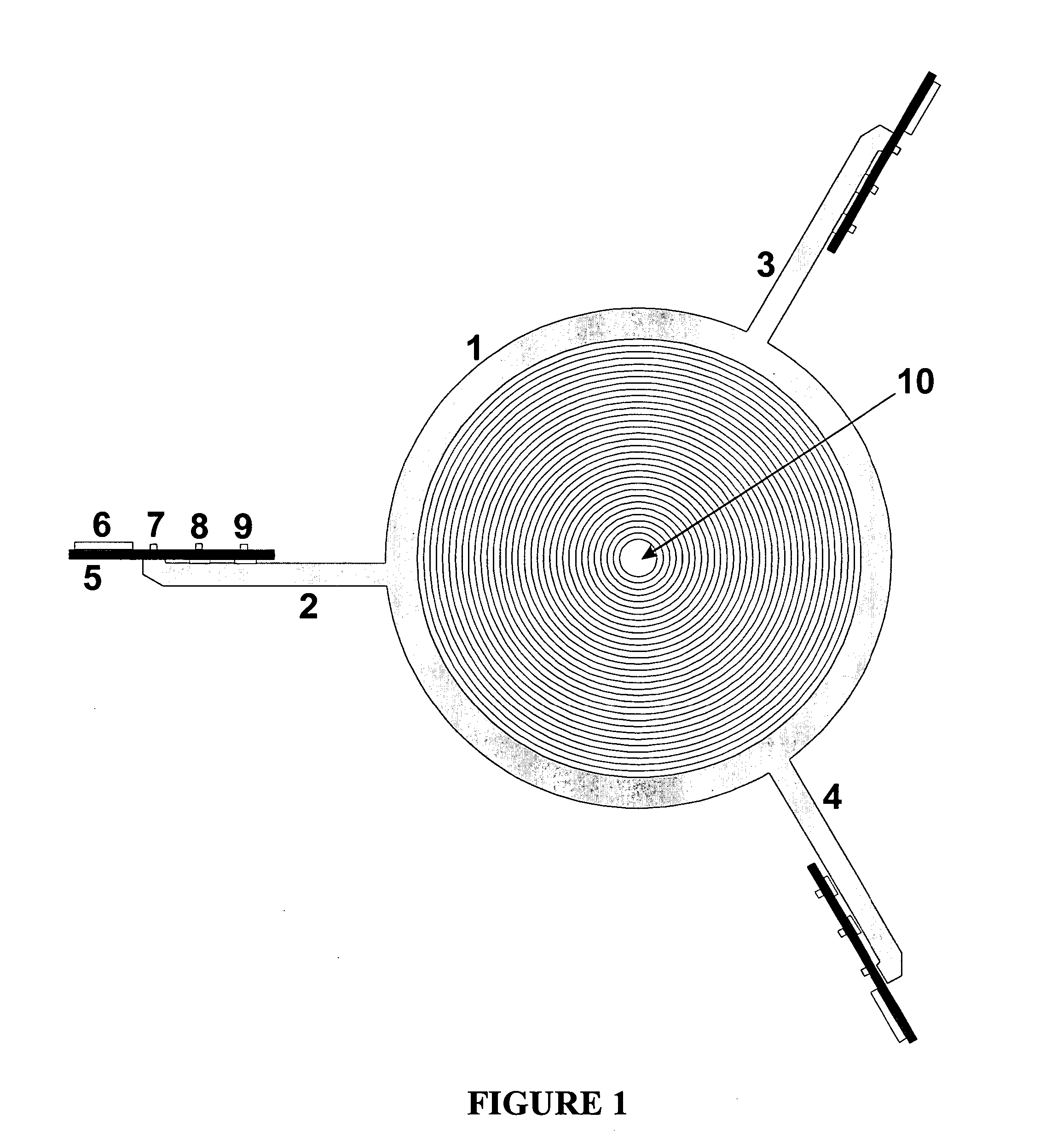Ion funnel with improved ion screening
a funnel and ion technology, applied in the field of funnels, can solve the problems of many ions already lost in front of the skimmer, embodiment of the ion funnel, and many ions lost, and achieve the effects of improving the ion capture, short and effective arrangement, and better transition
- Summary
- Abstract
- Description
- Claims
- Application Information
AI Technical Summary
Benefits of technology
Problems solved by technology
Method used
Image
Examples
Embodiment Construction
[0018]In modern mass spectrometers, it is becoming more and more common to use ion sources which generate the ions in pure gases at atmospheric pressure. The ions are then usually lead with the pure protective gas through a relatively long capillary (around 160 millimeters long with 500–600 micrometer internal diameter) into the first pump stage of a differential pump unit. Around two to four atmospheric liters of gas per minute are introduced into the vacuum system. Less frequently, simple small apertures of a few hundred micrometers diameter are used instead of the capillaries. Publications and the above cited patent specification describe ion funnels which are used instead of the usual gas skimmer to screen ions from gas streams and to transfer them in a concentrated form. The invention described here relates to an improvement to the ion funnel with respect to high transmission capacity for ions of a wide range of specific masses, easy escape of the gas to achieve a lower pressur...
PUM
 Login to View More
Login to View More Abstract
Description
Claims
Application Information
 Login to View More
Login to View More - R&D
- Intellectual Property
- Life Sciences
- Materials
- Tech Scout
- Unparalleled Data Quality
- Higher Quality Content
- 60% Fewer Hallucinations
Browse by: Latest US Patents, China's latest patents, Technical Efficacy Thesaurus, Application Domain, Technology Topic, Popular Technical Reports.
© 2025 PatSnap. All rights reserved.Legal|Privacy policy|Modern Slavery Act Transparency Statement|Sitemap|About US| Contact US: help@patsnap.com



